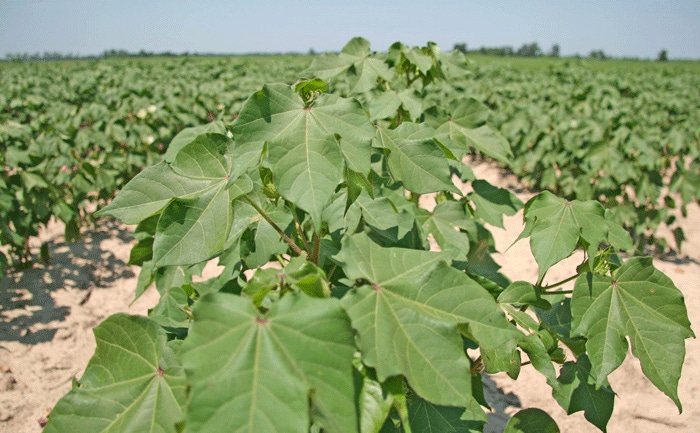August 1, 2012

Plant bugs, stink bugs, spider mites and a few bollworms and spider mites continue in many areas.
Plant bug pressure has been particularly intense in some areas. Several folks have commented that they have not seen this kind of pressure before.
Some are balking at making 2-3 consecutive applications on a short interval, but that is what it takes when battling populations that are 3 or more times the recommended treatment threshold (and sometimes increasing).
I provided suggestions about dealing with very high infestation of tarnished plant bugs in an article last week (link here).
The common follow-up question has been … when can I quit spraying for insects?
The decision to terminate insect control applications should mostly depend on crop maturity. Given the variable planting dates and rainfall amounts, we have cotton ranging from “safe” to “highly susceptible” to insects.
You already have a hint that a field is still susceptible to insect pests if it is loaded with plant bugs, stink bugs or bollworm. The highest populations often occur in the greenest (least mature) fields.
Below are some guidelines to remember.
• The last bolls that will contribute a meaningful amount of yield will be those present when the crop hits NAWF 4 or 5 (i.e., when the average 1st position white flower is 4-5 nodes below the uppermost node).
• These bolls need to be protected from plant bugs, stink bugs and bollworms for about 350 DD60s beyond NAWF=5. This typically takes 15-20 days depending upon temperatures. For example, a daytime high of 93F and a nighttime low of 73F results in an accumulation of 23 heat units (= [93 + 73]/2 -60 = 23 DD60s). It would take 15 days at these tempartures to reach NAWF5 + 350 DD60s.
• Yes, stink bugs and bollworms can feed on bolls older than 350 DD60s, but if fields are below threshold at this time, the likelihood of economic losses are small. Fields are rapidly becoming less attractive and the harvestable bolls are becoming less susceptible once you hit NAWF5 + 350 DD60s.
• Manage your fields to keep pest populations below threshold until you accumulate 350 DD60s past NAWF5. Don’t turn your back on fields that have pest populations well above threshold just because you hit the magic date. You can relax your treatment threshold a little bit once you have accumulated 200-250 DD60s, especially for tarnished plant bugs.
• You may potentially have to spray spider mite infestations for another 2 weeks (200-300 DD60s) past NAWF5 + 350 DD60s. However, if fields have hit the NAWF5 + 350DD60 mark, it is unlikely that low levels of mites will blow up to cause substantial yield loss in the next two weeks.
Most of the crop is relatively early this year. Thus, frost should not pose a serious threat. For any late fields, remember that the average frost date in west Tennessee is around Oct. 10-15. A boll set on Aug. 10-15 only has about a 50 percent chance of maturing before the average frost date.
You May Also Like




